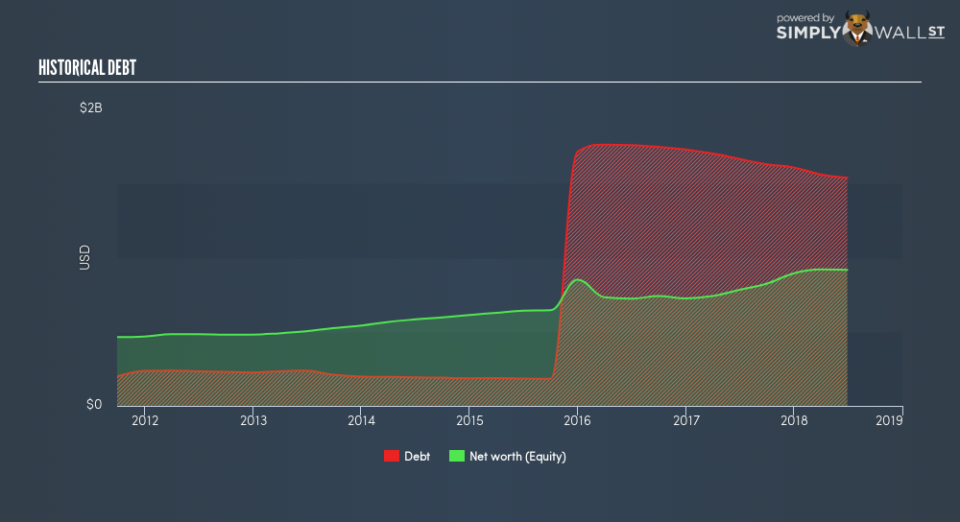Will Integer Holdings Corporation (NYSE:ITGR) Continue To Underperform Its Industry?

This article is intended for those of you who are at the beginning of your investing journey and want to start learning about core concepts of fundamental analysis on practical examples from today’s market.
Integer Holdings Corporation (NYSE:ITGR) delivered a less impressive 9.8% ROE over the past year, compared to the 10.0% return generated by its industry. ITGR’s results could indicate a relatively inefficient operation to its peers, and while this may be the case, it is important to understand what ROE is made up of and how it should be interpreted. Knowing these components could change your view on ITGR’s performance. I will take you through how metrics such as financial leverage impact ROE which may affect the overall sustainability of ITGR’s returns.
See our latest analysis for Integer Holdings
What you must know about ROE
Return on Equity (ROE) is a measure of Integer Holdings’s profit relative to its shareholders’ equity. An ROE of 9.8% implies $0.098 returned on every $1 invested. Generally speaking, a higher ROE is preferred; however, there are other factors we must also consider before making any conclusions.
Return on Equity = Net Profit ÷ Shareholders Equity
ROE is assessed against cost of equity, which is measured using the Capital Asset Pricing Model (CAPM) – but let’s not dive into the details of that today. For now, let’s just look at the cost of equity number for Integer Holdings, which is 12.3%. This means Integer Holdings’s returns actually do not cover its own cost of equity, with a discrepancy of -2.4%. This isn’t sustainable as it implies, very simply, that the company pays more for its capital than what it generates in return. ROE can be broken down into three different ratios: net profit margin, asset turnover, and financial leverage. This is called the Dupont Formula:
Dupont Formula
ROE = profit margin × asset turnover × financial leverage
ROE = (annual net profit ÷ sales) × (sales ÷ assets) × (assets ÷ shareholders’ equity)
ROE = annual net profit ÷ shareholders’ equity
The first component is profit margin, which measures how much of sales is retained after the company pays for all its expenses. Asset turnover reveals how much revenue can be generated from Integer Holdings’s asset base. And finally, financial leverage is simply how much of assets are funded by equity, which exhibits how sustainable the company’s capital structure is. Since ROE can be artificially increased through excessive borrowing, we should check Integer Holdings’s historic debt-to-equity ratio. At 168%, Integer Holdings’s debt-to-equity ratio appears relatively high and indicates the below-average ROE is already being generated by significant leverage levels.
Next Steps:
ROE is one of many ratios which meaningfully dissects financial statements, which illustrates the quality of a company. Integer Holdings’s ROE is underwhelming relative to the industry average, and its returns were also not strong enough to cover its own cost of equity. Its concerning leverage level means its ROE is already supported by high debt, raising questions over whether ROE will further decline in the future. ROE is a helpful signal, but it is definitely not sufficient on its own to make an investment decision.
For Integer Holdings, I’ve compiled three pertinent factors you should look at:
Financial Health: Does it have a healthy balance sheet? Take a look at our free balance sheet analysis with six simple checks on key factors like leverage and risk.
Valuation: What is Integer Holdings worth today? Is the stock undervalued, even when its growth outlook is factored into its intrinsic value? The intrinsic value infographic in our free research report helps visualize whether Integer Holdings is currently mispriced by the market.
Other High-Growth Alternatives : Are there other high-growth stocks you could be holding instead of Integer Holdings? Explore our interactive list of stocks with large growth potential to get an idea of what else is out there you may be missing!
To help readers see past the short term volatility of the financial market, we aim to bring you a long-term focused research analysis purely driven by fundamental data. Note that our analysis does not factor in the latest price-sensitive company announcements.
The author is an independent contributor and at the time of publication had no position in the stocks mentioned. For errors that warrant correction please contact the editor at editorial-team@simplywallst.com.


